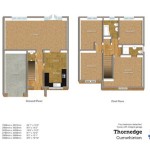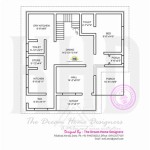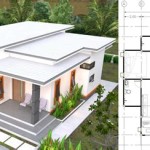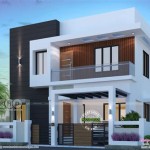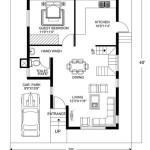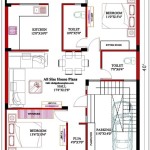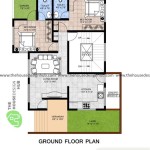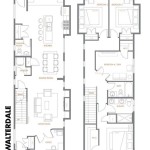Log Home House Floor Plans
Log homes evoke a sense of rustic charm and natural beauty. Careful planning is crucial to ensure the final construction aligns with the homeowner's vision and lifestyle needs. A well-designed floor plan maximizes the unique characteristics of log construction while addressing practical considerations like energy efficiency and flow.
Key Considerations When Choosing a Log Home Floor Plan
Several factors influence the selection of a log home floor plan. Understanding these elements allows for informed decisions and a smoother building process. These factors contribute to a home that is both aesthetically pleasing and functional.
- Lifestyle and Needs
- Budget
- Lot Size and Topography
- Desired Square Footage
- Number of Bedrooms and Bathrooms
- Open vs. Closed Floor Plan
- Energy Efficiency Considerations
Popular Log Home Floor Plan Styles
Log home floor plans range from traditional to contemporary, offering diverse architectural styles. Each style possesses unique characteristics that cater to different preferences and needs.
- Ranch Style: Single-story living, often featuring open floor plans.
- Chalet Style: Sloped roofs and exposed beams, ideal for mountainous terrain.
- Cabin Style: Cozy and compact, often used as vacation homes or retreats.
- Adirondack Style: Large, elaborate designs with intricate detailing.
- Contemporary Style: Blends modern elements with traditional log construction.
Maximizing Space and Functionality in Log Home Floor Plans
Effective space planning is essential in log home design. Optimizing the layout enhances both functionality and livability. Strategic placement of rooms and features contributes to a comfortable and efficient home.
- Consider traffic flow and create clear pathways.
- Maximize natural light through strategically placed windows.
- Utilize vertical space with lofts or vaulted ceilings.
- Incorporate built-in storage solutions.
- Designate specific areas for different activities.
Incorporating Outdoor Living Spaces
Log homes often integrate seamlessly with their natural surroundings. Extending living spaces outdoors enhances the connection with nature and provides additional areas for relaxation and entertainment. These spaces can be as simple or elaborate as desired, depending on the homeowner's preferences.
- Decks and Patios
- Porches and Verandas
- Outdoor Kitchens and Dining Areas
- Fire Pits and Outdoor Fireplaces
Working with a Log Home Designer or Architect
Professional guidance is invaluable when planning a log home. A designer or architect specializing in log construction possesses the expertise to navigate the unique challenges and opportunities presented by this building style. Their input ensures a structurally sound and aesthetically pleasing final product.
- Discuss your vision and lifestyle needs.
- Review potential floor plans and make modifications.
- Address site-specific considerations and building codes.
- Obtain accurate cost estimates and construction timelines.
Customizing Your Log Home Floor Plan
Personalization is a key aspect of log home design. Modifications to standard floor plans allow homeowners to create a space that truly reflects their individuality and preferences. Customization options range from minor adjustments to complete redesigns.
- Adjust room sizes and layouts.
- Add or remove features like fireplaces or built-ins.
- Customize kitchen and bathroom designs.
- Incorporate specific architectural details.
Budgeting for Your Log Home
Developing a realistic budget is crucial for a successful log home project. Understanding the costs associated with materials, labor, and site preparation allows for informed decision-making and prevents unexpected expenses. Accurate budgeting ensures the project remains within financial constraints.
- Log Material Costs
- Foundation and Site Work
- Labor and Construction Costs
- Finishing and Fixtures
- Permits and Inspections
- Contingency Funds
Energy Efficiency in Log Home Design
Modern log homes are designed with energy efficiency in mind. Utilizing sustainable building practices and incorporating energy-saving features minimizes environmental impact and reduces long-term operating costs. These practices contribute to a comfortable and environmentally responsible home.
- Proper insulation and sealing
- Energy-efficient windows and doors
- High-performance HVAC systems
- Solar panel integration
The Importance of Site Analysis
Careful site analysis is essential before finalizing a log home floor plan. Evaluating the topography, soil conditions, and surrounding vegetation informs design decisions and ensures the home integrates harmoniously with its environment. A thorough site analysis prevents potential construction challenges and maximizes the site's potential.
- Topography and Slope
- Soil Conditions and Drainage
- Vegetation and Tree Placement
- Sun Exposure and Wind Patterns
- Access to Utilities

10 Bedroom Log Cabin Floor Plans Ideas House Home

Log Cabin Floor Plans Many To Choose From

Log House Plans Google Search Home Cabin Homes

Log Homes Of America Inc Home Plan Ideas

Lodge Log And Timber Floor Plans For Homes Lodges Cabins Bear Lake

Browse Floor Plans For Our Custom Log Cabin Homes House Home

Frontier Log Homes Luxury Cabin Montrose Co

Browse Floor Plans For Our Custom Log Cabin Homes House Home
Lafayette Log Home Plan By Southland Homes

Browse Floor Plans For Our Custom Log Cabin Homes

